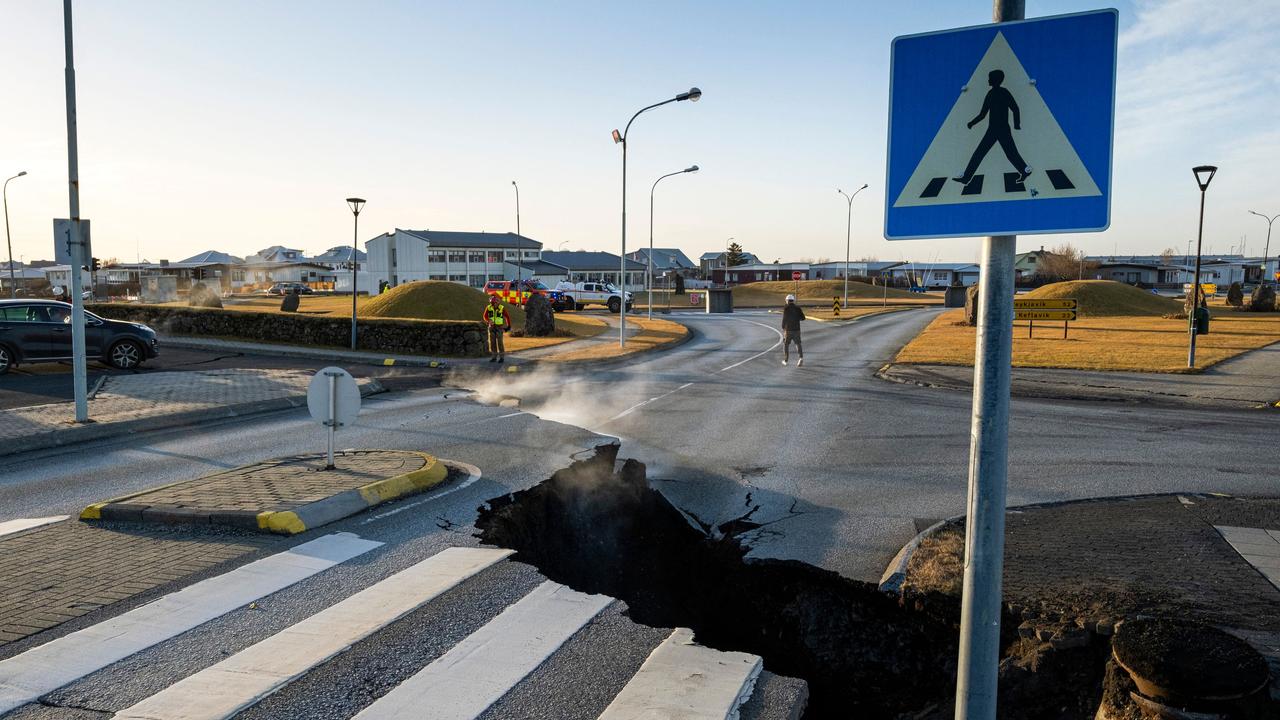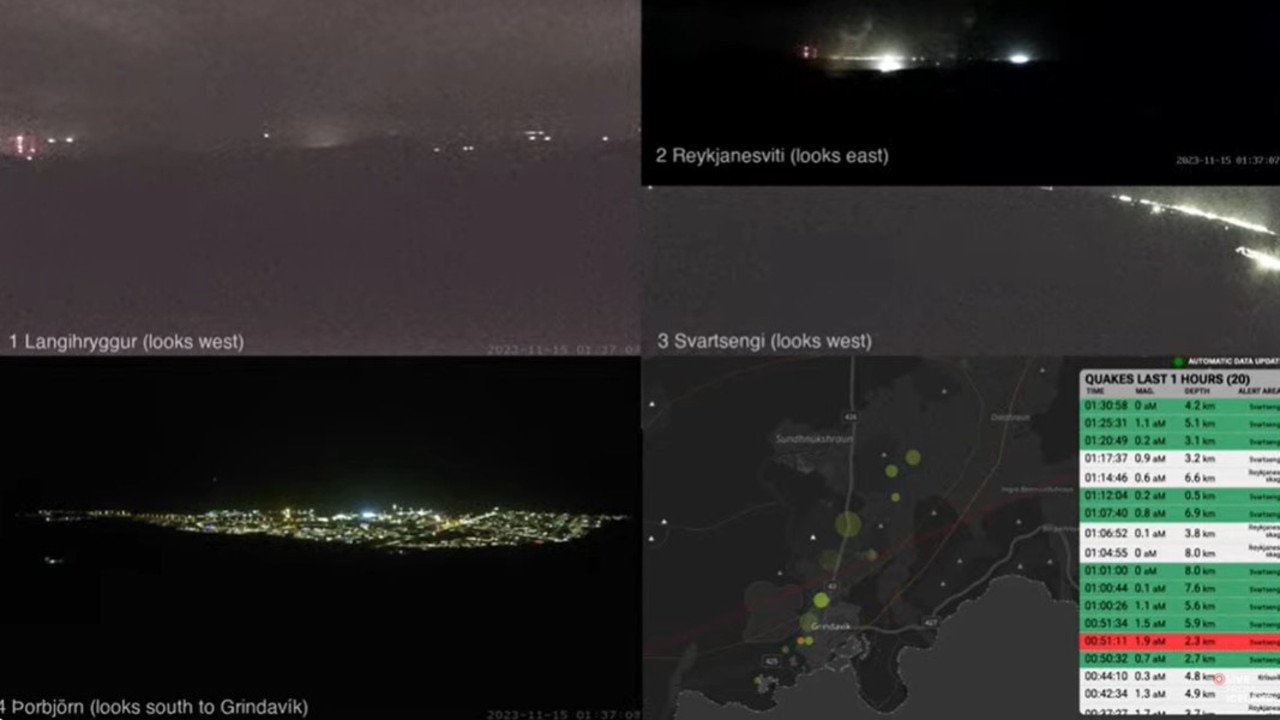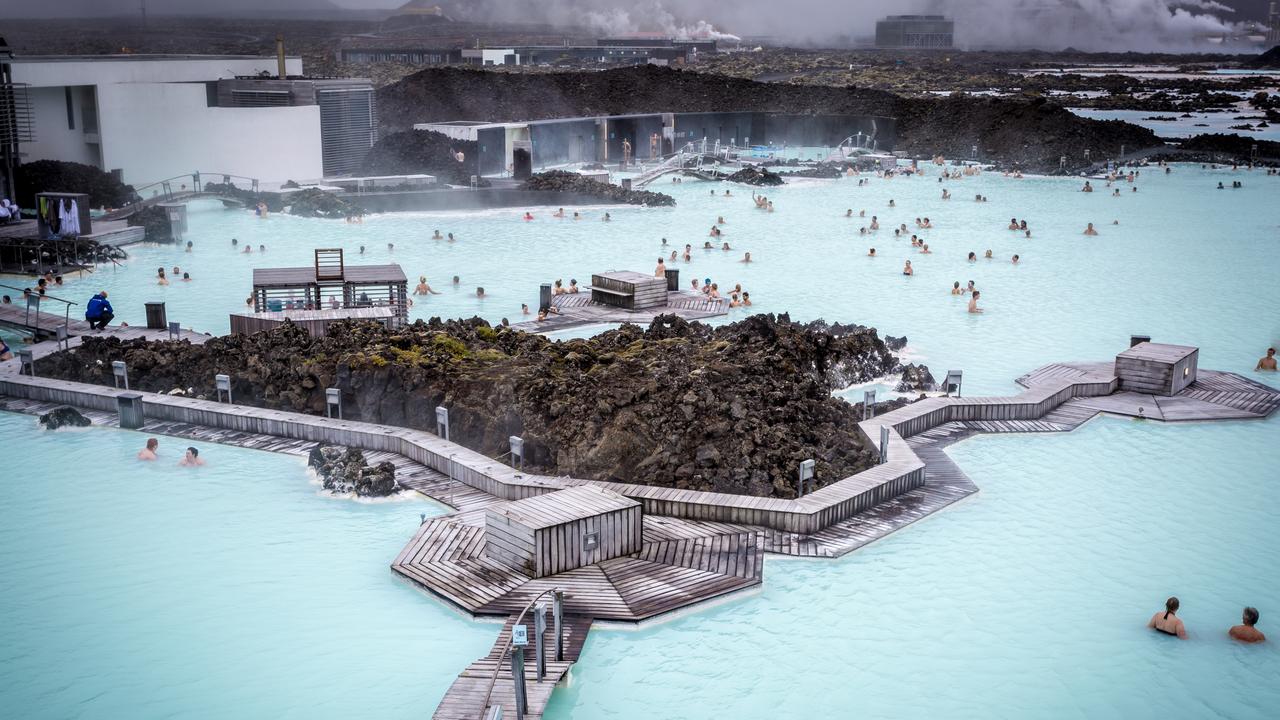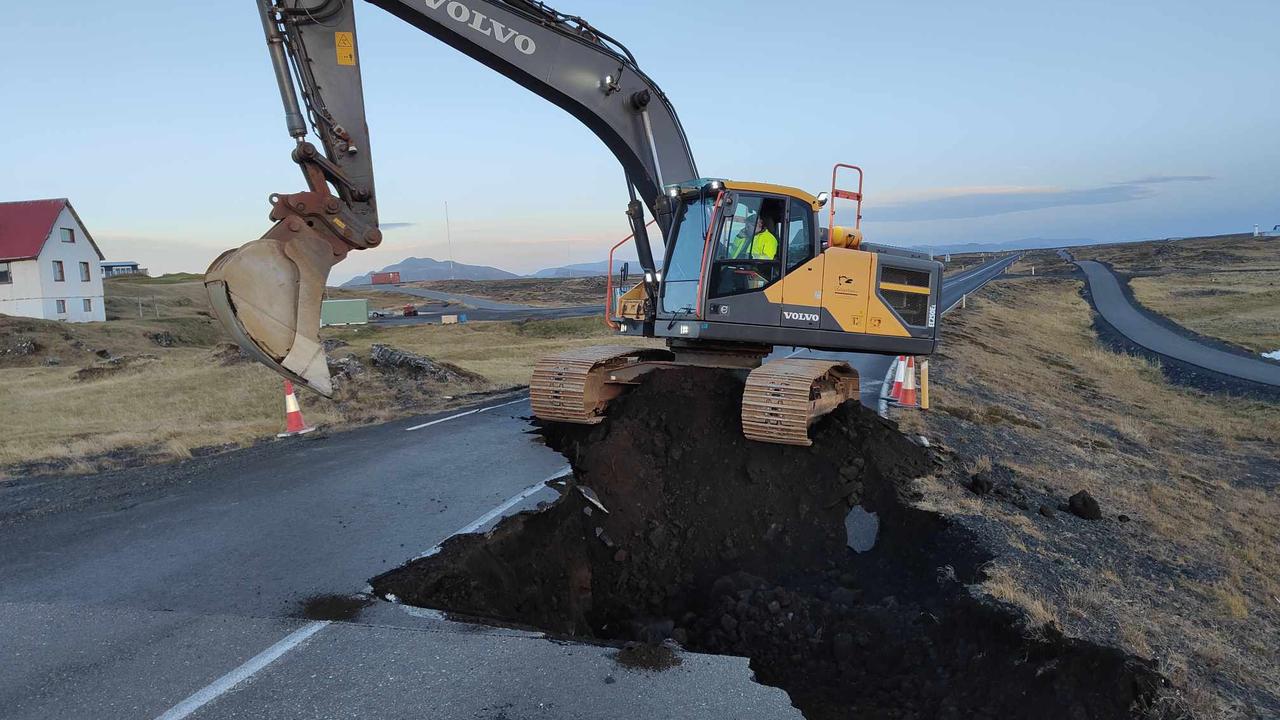Travel warning for Aussies as Iceland braces for volcanic eruption
A popular tourism region in this European nation has been hit with hundreds of earthquakes and is bracing for a possible volcanic eruption.
Iceland is bracing for a possible volcanic eruption in the Reykjanes peninsula, home of the famous geothermal spa Blue Lagoon – one of the country’s biggest tourist attractions.
The Nordic island nation, which has 33 active volcanic systems, has declared a state of emergency.
The southwestern town of Grindavik – home to about 4000 people – was evacuated in the early hours of Saturday after magma shifting under the Earth’s crust caused hundreds of earthquakes in what experts warned could be a precursor to a volcanic eruption.
Incredible pictures show huge cracks in roads from the seismic activity.
“We have a fissure that’s about 15 kilometres long, and anywhere on that fissure we can see that an eruption could happen,” Vidir Reynisson, head of Iceland’s Civil Protection and Emergency Management agency, told AFP on Saturday.

People from across the world have their eyes on a livestream on YouTube featuring four different views in the Reykjanes peninsula, waiting for a possible eruption.
Live from Iceland, responsible for the livestream, notes steam currently visible in the footage is from power plants and geothermal areas, which it says is “normal”.

Travel warning for Aussies
The Australian government’s Smartraveller website advises Aussies to “avoid areas near volcano eruption sites and areas close to mountains with steep slopes on the Reykjanes peninsula due to the danger of falling rocks”.
“Volcanic and seismic activity around Mt. Thorbjörn, 40km southwest of Reykjavik and near the Blue Lagoon and Keflavik International Airport, has increased,” it states.
If you’re in Iceland:
• Stay away from areas near the eruption sites, particularly if you suffer from respiratory ailments due to the risk of harmful gases
• Avoid areas close to mountains and steep slopes on the Reykjanes peninsula due to the danger of falling rocks
• Monitor local media to stay informed, and follow the advice of local authorities.
Tsunamis are also a threat in coastal areas. If you’re near the coast, move to high ground straight away if advised, or if you:
• Feel a strong earthquake that makes it hard to stand up
• Feel a weak, rolling earthquake that lasts a minute or more
• See a sudden rise or fall in sea level
• Hear loud and unusual noises from the sea
Smartraveller says not to wait for official warnings such as alarms or sirens. Once on high ground, travellers should monitor local media.

Blue Lagoon Iceland closed
The Blue Lagoon was closed on November 9 with intentions to reopen one week later on November 16, but it will now be closed until at least November 30.
“Iceland is no stranger to volcanic activity, and there have been three eruptions on the Reykjanes peninsula in the last two years,” a statement said.
“Icelandic authorities and local communities are well-prepared for such events, and Iceland has one of the world’s most effective volcanic preparedness measures. Iceland’s geoscientists possess vast experience in dealing with volcanic activities.”
In regards to the closure, Blue Lagoon said: “Considering disruptions to our guests’ experience and the sustained pressure on our employees, these precautionary measures were taken to ensure safety and wellbeing for all.”
‘Considerable uncertainty’ over future of Grindavik
Grindavik residents who were forced to evacuate were able to briefly return on Monday to collect their belongings.
“Many roads are just wrecked. It’s like a maze that you have to drive through,” Johannes Daoi Johannesson, 34, told AFP.
“I was basically here just to empty my house as much as I could and take the essentials,” he said, along with “something for the kids, Christmas presents.”
After waiting for hours in their cars, residents could enter their homes for just a few minutes to collect their valuables, with Icelandic police and civil protection vehicles on standby.

Evacuations like the one in Grindavik do not happen often, according to David McGarvie, a volcanologist at the University of Lancaster.
“The last evacuation of an entire sizeable settlement in Iceland occurred 50 years ago during the 1973 eruption on the island of Heimaey off the south coast of Iceland,” he said.
“The displaced people of Grindavik will be understandably anxious because there is considerable uncertainty over the future of their town.”
Grindavik is on the country’s southwestern Reykjanes peninsula, home to the Fagradalsfjall volcano.
Three eruptions have taken place near Fagradalsfjall, in March 2021, August 2022 and July 2023 – all far from any infrastructure or populated areas
– with AFP






